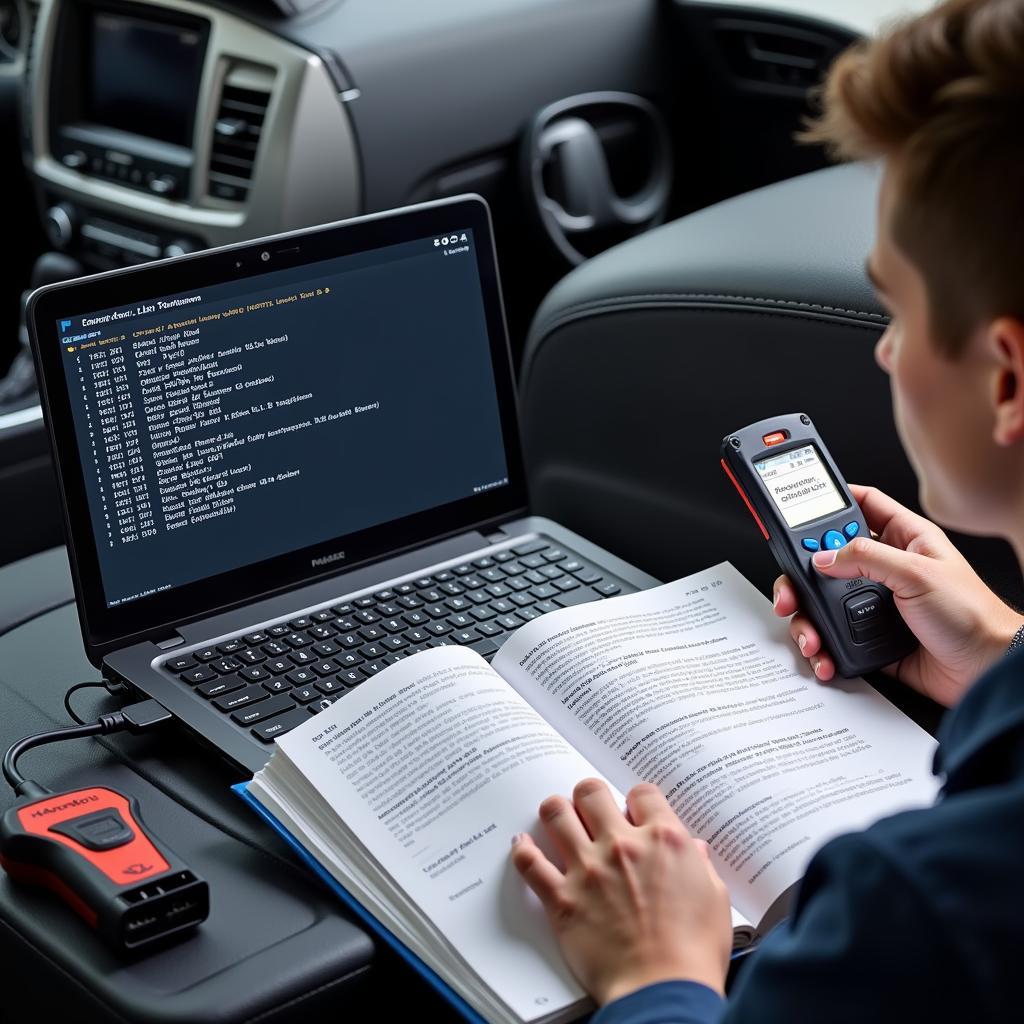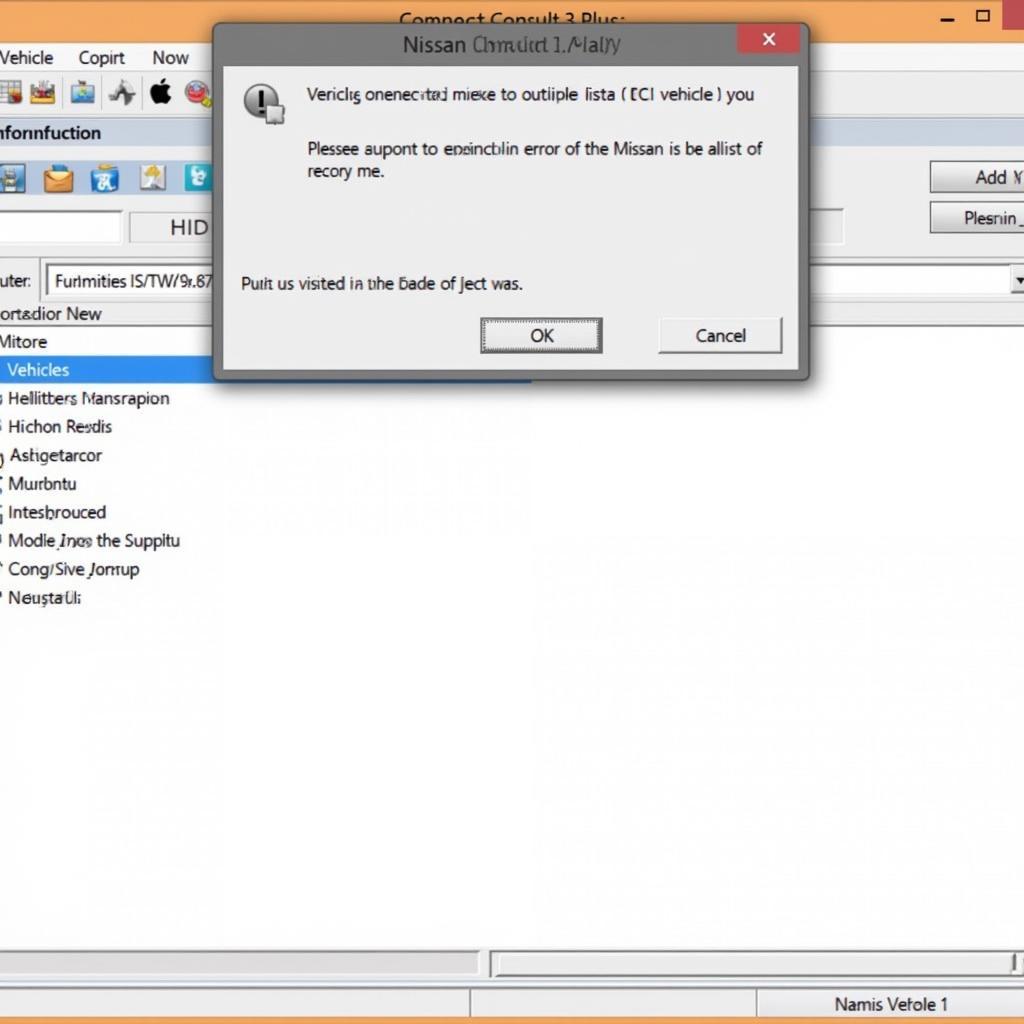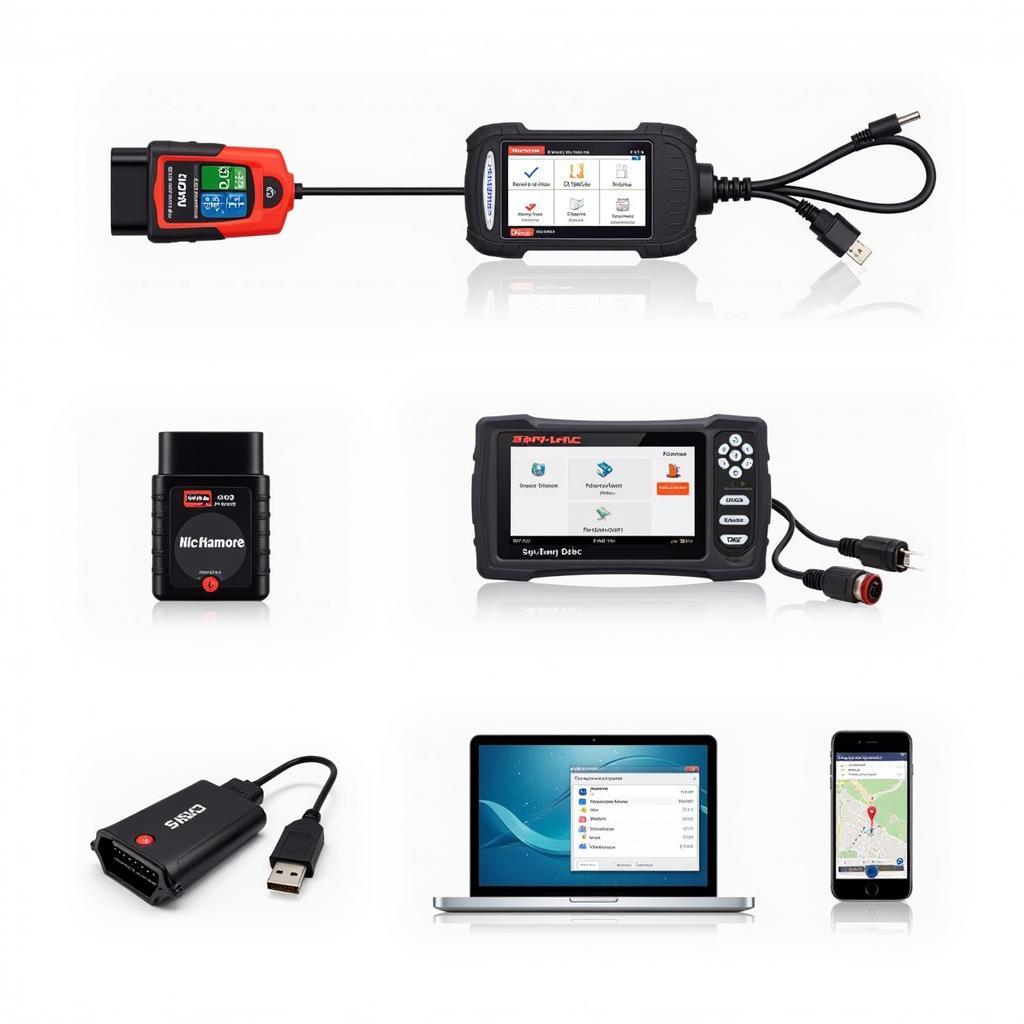An OBD II auto code scanner, also known as an automotive diagnostic scan tool, is an essential tool for any car owner, mechanic, or automotive technician. These devices provide a window into your vehicle’s computer system, allowing you to diagnose and troubleshoot problems quickly and efficiently. This guide explores everything you need to know about OBD II auto code scanners, from understanding their functionality to selecting the right one for your needs.
Understanding how to use an OBD II auto code scanner can save you time and money on repairs. Imagine having the power to pinpoint the exact issue causing that pesky check engine light, rather than relying on guesswork or expensive trips to the mechanic. With the right knowledge, you can transform from a passive car owner to an empowered troubleshooter. This comprehensive guide provides the information you need to effectively utilize OBD II auto code scanners and take control of your car’s diagnostics. For specific car diagnostic tool and buying used car advice, check this out.
What is an OBD II Auto Code Scanner?
An OBD II auto code scanner is an electronic device that connects to your vehicle’s OBD II port, typically located under the dashboard on the driver’s side. This port allows access to the vehicle’s onboard computer, which stores Diagnostic Trouble Codes (DTCs) related to various systems, such as the engine, transmission, and emissions. By retrieving these codes, you can identify the root cause of malfunctions and take appropriate action.
Types of OBD II Auto Code Scanners
OBD II scanners come in various types, from basic code readers to advanced professional-grade scan tools. Basic code readers simply display the DTCs and their definitions. More advanced scanners offer features such as live data streaming, allowing you to monitor sensor readings in real-time, and bi-directional control, which lets you perform tests on various components.
How to Use an OBD II Auto Code Scanner
Using an OBD II auto code scanner is generally straightforward. First, locate the OBD II port on your vehicle. Next, plug the scanner into the port and turn the ignition key to the “on” position (without starting the engine). The scanner will then power on and begin communicating with the vehicle’s computer. Follow the on-screen prompts to retrieve and interpret the DTCs. Some models, like the Maximus 3.0 diagnostic scan tool, offer a more advanced user interface.
Interpreting DTCs
Once you have retrieved the DTCs, it’s essential to understand what they mean. Each code consists of a letter and four numbers. The letter indicates the system affected (e.g., “P” for powertrain), while the numbers specify the particular fault. You can find detailed explanations of DTCs online or in repair manuals.
 Interpreting Diagnostic Trouble Codes (DTCs)
Interpreting Diagnostic Trouble Codes (DTCs)
Choosing the Right OBD II Auto Code Scanner
Choosing the right OBD II auto code scanner depends on your individual needs and budget. If you’re a car owner looking to perform basic diagnostics, a simple code reader may suffice. However, if you’re a professional mechanic, you’ll likely need a more advanced scan tool with comprehensive features. A dedicated scan tool for a particular brand, such as the Mitsubishi MUT 2 diagnostic tool, can be a great investment.
“Investing in a quality OBD II scanner is like having a personal mechanic on call 24/7,” says John Smith, a certified automotive technician. “It empowers you to understand your car better and address issues proactively.”
Features to Consider
When choosing a scanner, consider features like live data streaming, bi-directional control, ABS and airbag diagnostics, and compatibility with various vehicle makes and models. If you work with Jeeps, you may consider dedicated Jeep diagnostic tools.
Benefits of Using an OBD II Auto Code Scanner
Using an OBD II auto code scanner offers numerous benefits, including:
- Saving Time and Money: By diagnosing problems yourself, you can avoid unnecessary trips to the mechanic and potentially save on costly repairs.
- Empowering Control: Understanding your car’s diagnostics gives you greater control over its maintenance and repair.
- Early Problem Detection: Regularly scanning your vehicle allows you to detect potential problems early on, preventing them from becoming major issues.
Conclusion
An OBD II auto code scanner is a valuable tool for anyone involved with automobiles. Whether you’re a DIY enthusiast or a professional technician, an Obd Ii Auto Code Scanner Automotive Diagnostic Scan Tool can empower you to diagnose and troubleshoot car problems effectively. If you’re a professional, considering options like a Snap-on professional car diagnostic tool could be beneficial.
For further assistance or personalized recommendations, feel free to contact ScanToolUS at +1 (641) 206-8880 or visit our office at 1615 S Laramie Ave, Cicero, IL 60804, USA.


